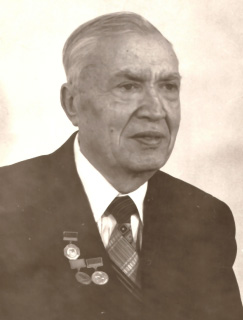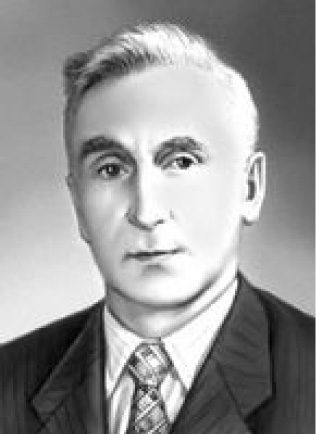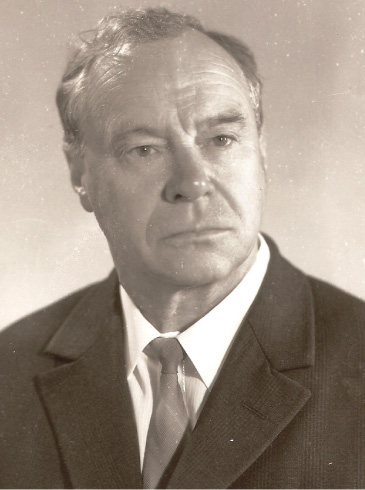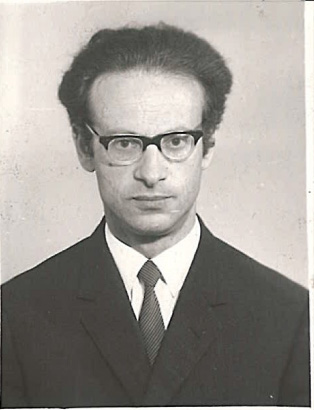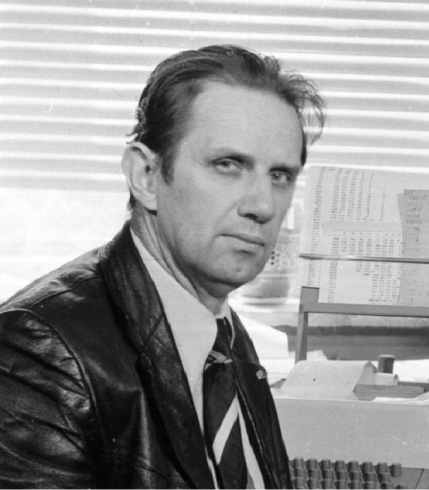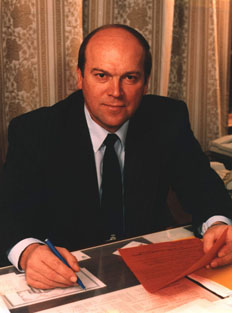PHYSICS OF STRENGTH OF METALS AND ALLOYS
|
|
School founder:
Vitaly N. Gridnev (1908–1990)
Member of the Ukr.SSR A.S.
|
Based on the studies of Academician V.N. Gridnev and his followers in researching of phase transformations in nonequilibrium conditions, the physical conceptions about the mechanisms of diffusion and diffusionless processes and the character of metastable states intentionally caused by rapid heating in steels and providing them with physical-and-mechanical properties were developed.
The development of theoretical and experimental research in this field promoted the development of methods of rapid electrothermal, laser, electric-spark, thermocyclic, thermomechanical, ultrasonic, mechanical impact treatments as well as the expansion of the material classes such as titanium and heat-resistant nickel alloys, in which, within the considerably nonequilibrium conditions, the structure–phase states are formed, providing a high level of properties.
The physical principles of optimal alloying of constructional materials are developed, aiming on the obtaining of the given properties by considerable saving of scarce alloying elements, in particular, aluminium and invar alloys, steels with over-equilibrium content of nitrogen.
The mechanisms of plastic deformation of metallic materials were set, and physical models of the fracture of constructional materials in the compound external fields, high-temperature strength of metals and intermetallics were created.
The results of fundamental research formed the physical basis for the development of new constructional materials and technological processes.
At present, the school is governed by the Member of the N.A.S. of Ukraine, Doctor of Technical Sciences, Professor O.M. Ivasishin.
PHASE TRANSFORMATIONS AND PHASE EQUILIBRIA
|
|
School founder: Georgy V. Kurdyumov (1902–1996)
Member of the USSR A.S., Member of the Ukr.SSR A.S.
|
The pioneer research started by Academician G.V. Kurdyumov on physics of martensitic transformations in alloys had given a push for systematic studying of these phenomena both in the Institute and in the world overall. Under the direction of Academician V.M. Svechnikov, the research on phase equilibria and plotting of phase diagrams of multicomponent alloys with high indices of high-temperature strength, heat resistance, and wear resistance have been started and have being successfully developed in the Institute.
The scientists of the Institute developed the physical models of phase transformations in different alloys. The phenomenon of abnormally low and abnormally high martensite tetragonality that lies in the basis of numerous experimental and theoretical studies of structural martensite state in tempered interstitial and substitutional alloys was discovered.
The variety of structural states by heating of tempered alloys in the range of low temperatures was discovered, and the mechanisms of structure formation were proposed, on the basis of which the relaxation processes of internal stresses, diffusion redistribution and atomic ordering were laid.
The phenomena of alloy polytypism were discovered at the Institute. Academician G.V. Kurdyumov and Professor L.G. Khandros discovered the phenomenon of thermoelastic equilibrium during the martensitic-type phase transformations (Kurdyumov effect), stipulating the unique physical-and-mechanical properties, in particular, shape-memory effect, hyperelasticity, abnormally high damping of the metallic materials.
The new physical phenomenon—a magnetic shape-memory effect in the Heusler alloys was thoroughly researched in the Institute that stipulated the so-called magnetic creep. The development of experimental and theoretical research of phase transformations has expanded a circle of metallic systems and has created a scientific basis for working out of the new low-temperature and high-temperature alloys with the shape-memory effect.
The articles of Academician V.I. Danilov were taken as a basis for the research of his disciples and followers in the field of researching of structures of liquid and amorphous metals and alloys and their crystallization processes. The physical models of homogeneous nucleation by the formation of cast structures were created, the kinetics regularities were set, and the mechanisms of nucleation of crystallization centres, structure formation of the multicomponent metallic melts in the conditions of their deep overcooling, depending on structural heterogeneities, different types of inclusions and behaviour of crystallization front were determined. The results of the studies of the crystallization processes and structure formation were laid into the basis of the developments on rapid-tempered amorphous and nanocrystalline alloys with unique properties, new technologies of their fabrication and engineering of products made of these materials.
THEORY OF METALS AND ALLOYS WITH IMPERFECT CRYSTAL STRUCTURE
|
|
School founders: Adrian A. Smirnov (1908–1992) Member of the Ukr.SSR A.S.
Mykhailo O. Krivoglaz (1929–1988)
Corresponding Member
of the Ukr.SSR A.S
|
|
Under the leadership of Academician A.A. Smirnov and in further research of his disciples, the statistical-thermodynamic theories were created for: substitutional, interstitial and subtraction alloys, which were ordered and decomposed, electrical and magnetic properties of alloys, structural phase transformations, long-range and short-range atomic orders and atomic diffusion in alloys, interatomic interactions in interstitial and substitutional solid solutions.
In a given direction, the creation of the theories of electronic properties of the disordered crystals, taking into the account the correlation effects in spatial distribution of atoms, fluctuon states and concentration effects in restructuring of spectra of the elementary excitations in imperfect solids could be related to the achievements of the Institute.
The research of the Corresponding Member of the N.A.S. of Ukraine M.O. Krivoglaz is considered as fundamental in the field of the theory of radiation scattering by the defect crystals. M.O. Krivoglaz and his disciples created the kinematic and dynamic theories of scattering of X-ray beams and neutrons by imperfect crystals with defects. Within the scope of these theories, the classification of the defects of different types, according to their influence on pattern of radiation scattering was given. The classification is taken as a basis in modern structural diagnostics of the materials in many laboratories in the world.
The scientific basis and principles of the experimental diagnostic basis of qualitatively new level of information values, sensitivity and quick testing were developed.
ELECTRONIC STRUCTURE AND SPECTROSCOPY OF SOLIDS
|
|
School founder: Volodymyr V. Nemoshkalenko (1933–2002)
Member of the Ukr.SSR A.S.
|
The studies of Academician V.V. Nemoshkalenko were taken as a basis in application of methods of X-ray emission, photoelectron and Auger spectroscopy to research metals and alloys that enriched notions about electronic structure and electronic properties of wide range of materials: metals, alloys, intermetallic compounds, oxides, nitrides, carbides, hydrides of the transition metals, as well as notions about main regularities of their alterations by phase transitions, ordering, amorphization, and structure transformations in the surface layers and films.
The experimental studies were accompanied by fast development of methods of computational physics, providing, hereinafter, the qualitatively new level of scientific activities at the Institute. The discovery of property of inoxidizability of elemental substances in superdispersed forms, which were on the surface of cosmic bodies, made by Academician V.V. Nemoshkalenko together with Professor V.G. Alyoshyn, belongs to the achievements in this direction.
The considerable contributions into the development of this direction are the studies in the field of electrodynamics of superconductors and superconducting compositions in the magnetic fields, physics of superconductors with high critical parameters and anisotropic nonideal type II superconductors with structure defects, new superconducting compositions and multilayer structures. A new class of superconductors—ferrîpnictides was researched, and an orbital selectivity of electrons, which form the superconducting condensate, was discovered.
In the studies of this direction, the role of chemical and structural factors in the ionization processes of scattered atoms was determined, the structure peculiarities and dynamical properties of surface of metals and alloys comparatively to the bulk properties with subject to influence of magnetic transformations on the surface phonons were set. On this basis, the new methods and devices for local and layer-by-layer physical-and-chemical analysis of the surface layers of metals and alloys were created.
At present, the school is governed by both the Corresponding Member of N.A.S. of Ukraine, Doctor of Physicomathematical Sciences, Professor V.M. Antonov and the Corresponding Member of N.A.S. of Ukraine, Doctor of Physicomathematical Sciences, Professor V. M. Uvarov.
NANOSTRUCTURED SYSTEMS PHYSICS
|
|
School founder: Anatoliy P. Shpak (1949–2011)
Academician N.A.S. of Ukraine
|
Works of A.P. Shpak form the basis for solving a number of problems of spectroscopy of electronic and exciton states of low dimensional condensed systems. The possibility of effective diagnosis of quasi 0D systems by optical and electro-optical methods was shown. The problems related to the theoretical studies of the spectra of quasiparticles in low-dimensional systems, complex heterostructures, quantum wires, spherical structures and periodic superlattice of quantum dots were considered.
The concept of the nanopores as a phase-structural inhomogeneities in the condensate at surface of a solid was proposed. Was developed a set of X-ray diffraction techniques and methods of quantum mechanical simulations, which enable to explore the features of spatial distribution of atoms in melts, amorphous alloys, as well as find relation with the physical properties of structures in disordered media.
The theory of interaction of electromagnetic radiation with nanoparticles and the matrix disperse media of different nature. The increase of strength nanolayer metal composite materials in comparison with the additive strength of the components was grounded, the promising developments of new ways of metal structuring for substantially increasing the mechanical properties of multilayered material and coatings were proved. New theoretical models for nanomaterials analysis by photoelectron spectroscopy were developed.
A series of nanostructured drugs and materials for boil-medical purposes was produced. In surgical practice introduced medical drugs based on synthetic bone minerals. The range of effects of biological origin nanostructures in conditions of physical and biochemical processes was described. Applied result these studies was the creation a new ophthalmoscope for spectral analysis of functional elements of the eye and detection of pathologies in real time mode.
A.P. Shpak works formed the basis of the concept for establishing a complex special-purpose fundamental research program of NAS of Ukraine "Nanostructured systems, nanomaterials and nanotechnologies" and state special-purpose R&D program "Nanotechnology and nanomaterials", scientific supervisor of which he was.
Formation of methodology of synthesis and investigation of the nanostructures properties carried A.P.Shpak contributed to the formation of a new paradigm in the understanding of the processes at nanolevel.At present, the school is governed by doctor of physicomathematical sciences, professor, winner of the State prize in science and engineering V. L. Karbovskii



